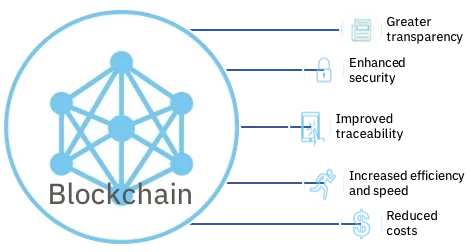Collateral damage over credits or security assets? Try blockchain
Access to credit fuels economies everywhere. Collateral boosts this access by providing credit lenders with an asset-backed security or trust in repayment of a loan in the event of default. When the integrity of this collateral is ensured, risk is reduced, interest rates are lowered, and economic growth is fueled. When the system breaks down the collateral damage can be massive.
In the US, Article 9 of the Uniform Commercial Code (UCC), attempts to limit the likelihood of collateral damage through the implementation of a unified law for governing security interests. The article effectively grants creditors with security interests in a bankrupt debtor’s estate priority over unsecured creditors when assets are distributed.
So far, so good. But what does any of this have to do with blockchain? To answer this question, we need to first take a moment to think about the current processes underlying the Uniform Commercial Code.
A minefield for collateral damage
Under Article 9, UCC financing statements are filed by the creditor to provide public notice of their lien on the underlying collateral of the secured loan. This filing process is complex as it varies from state to state, relies on multiple intermediaries, and must be precise. Incomplete or inaccurate financing statements can render a lender’s claim unsecured, meaning every last detail in a UCC financing statement must be meticulously entered and correct. If not, the potential areas for collateral damage are vast:
UCC filing mistakes
In the case of First Midwest Bank v. Reinbold in August 2018, the Bank failed to attach the collateral description after mentioning it as, “All Collateral described in First Amended and Restated Security Agreement dated March 9, 2015 between Debtor and Secured Party.” The court ruled that the Bank’s financing statement failed to describe the collateral and granted the motion to void the Bank’s security interest.
Accidental release
Inadvertent mistakes committed by legal entities or organizations while filing UCC statements or amendments can have serious consequences. A noteworthy case is the Official Committee of Unsecured Creditors v. JPMorgan Chase Bank, N.A., in January 2013. The U.S. Court of Appeals for the Second Circuit held that JPMorgan Chase Bank, N.A.’s security interest in a $1.5 billion loan to General Motors was legally terminated, even though it was done in error, by a paralegal at the law firm representing the borrower.
Incorrect debtor name search
When conducting a UCC Search, the lender must ensure the exact spelling of the debtor business entity name. An incorrect placement of a comma, period, blank, or spelling error may result in the incorrect debtor’s lien records being searched, which could result in a more subordinated lien position than the lender expected.
Inadvertent expiration of UCC financing statement
UCC liens expire after five years, even if the debt is not paid off. Lenders need to renew the perfected lien within six months before expiry; if not, it lapses, and the lender becomes an unsecured party.
Debtor name change
A significant name change triggers the need for the secured party to file an amendment to the existing financing statement to reflect the debtor’s new name. It is important to file an amendment within the four-month grace period, rather than a new financing statement, to preserve its original priority date.
Loan is sold
When a lender sells a loan to another lender, the debtor must be notified, so that the payments can be routed to the right entity. Of course, the new lender needs to ensure the lien position is established or carried over from the original lender.
Blockchain to the rescue

A blockchain-based UCC platform, with lenders and registered agents as a node(s), enhances the transparency and streamlines the process of ensuring the ongoing integrity of a lender’s loan registry, at the secured asset level, with the legal claim on the secured collateral.
A UCC blockchain platform has the capability to provide timely notifications that can improve the way the filings are monitored, thereby preventing many of the creditor pitfalls highlighted above.
Another value add is helping organizations to create a better portfolio of securitized assets that can be sold or traded faster. The complexity inherent in securitization, especially the non-stationary credit quality that are time and structure-dependent, can limit investors’ ability to monitor risk. In this secondary market, organizations can significantly benefit from saving cost on re-validating data and improving the time frame to trade and settle. UCC blockchain platforms can, in effect, feed the entire upstream securitization process with increased transparency and efficiency for the entire value chain.
Lenders and registered agents can also add value to the platform to ensure perfection is maintained as well as provide additional features:
- Notification to file amendments in case of changes in debtor or collateral details
- Advanced analytics that learn from past filings and provide alerts about missing attachments or inconsistent details
- Advanced analytics to enhance debtor name searching using variants of the debtor names, reducing the time and labor involved in the process
- Advanced analytics to gain insights into the creditworthiness, collateral valuation, and other factors
- Smart contracts with all the latest/amended laws published on the platform
Going forward
At the institutional level, banks are leading the use of blockchain in payment transactions, clearing and settlement, digital identity, and many other use cases. As banks continue to expand the use of blockchain ecosystems, participants will be disrupted with new ways of doing business and adding value. Using blockchain, states and registered agents can build upon this by providing a UCC platform for creditors to ensure the integrity of a lender’s loan registry, at the secured asset level, with the legal claim of the state’s UCC records.
Forward-looking government agencies, creditors, and registered agents are already exploring the value add of blockchain-based UCC platform to improve lending liquidity and fuel growth. Given the unprecedented pace of this technology-driven change, the question now is whether their competitors will be able to keep pace or themselves become collateral damage in the era of disruption.



